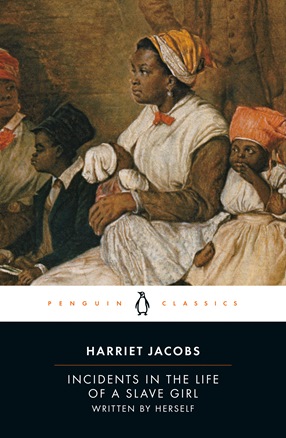Description
One of the central firsthand accounts of slavery in America
A haunting, evocative recounting of her life as a slave in North Carolina and of her final escape and emancipation, Harriet Jacobs's classic narrative, written between 1853 and 1858 and published pseduonymously in 1861, tells firsthand of the horrors inflicted on slaves. In writing this extraordinary memoir, which culminates in the seven years she spent hiding in a crawl space in her grandmother's attic, Jacobs skillfully used the literary genres of her time, presenting a thoroughly feminist narrative that portrays the evils and traumas of slavery, particularly for women and children.
For more than seventy years, Penguin has been the leading publisher of classic literature in the English-speaking world. With more than 1,700 titles, Penguin Classics represents a global bookshelf of the best works throughout history and across genres and disciplines. Readers trust the series to provide authoritative texts enhanced by introductions and notes by distinguished scholars and contemporary authors, as well as up-to-date translations by award-winning translators.
About the Author
Harriet Ann Jacobs, usually wrote under the name Harriet Jacobs but also used the pseudonymLinda Brent.Harriet was born in Edenton, North Carolina to Daniel Jacobs and Delilah. Her father was a mulatto carpenter and slave owned by Dr. Andrew Knox. Her mother was a mulatto slave owned by John Horniblow, a tavern owner. Harriet inherited the status of both her parents as a slave by birth. She was raised by Delilah until the latter died around 1819. She then was raised by her mother's mistress, Margaret Horniblow, who taught her how to sew, read, and write.In 1823, Margaret Horniblow died, and Harriet was willed to Horniblow's niece, Mary Matilda Norcom, whose father, Dr. James Norcom, became her new master. She and her brother John went to live with the Norcoms in Edenton. Norcom subjected her to sexual harassment for nearly a decade. He refused to allow her to marry any other man, regardless of status, and pressured her to become his concubine and to live in a small house built for her just outside the town. Attempting to deflect Norcom’s advances, she became involved with a consensual lover, Samuel Sawyer, a free white man and a lawyer who eventually became a Senator. She and Sawyer were parents to two children, Joseph and Louisa Matilda (named Benny and Ellen in the book), also owned by Norcom. Harriet reported that Norcom threatened to sell her children if she refused his sexual advances. She then moved to her grandmother’s house, and was allowed to stay there because Norcom’s jealous wife would no longer allow her to live in the Norcom house.By 1835, her domestic situation had become unbearable; her lack of cooperation prompted Norcom to send her to work on a plantation in Auburn. Upon finding out that Norcom planned to send her children into labor as well, she decided to escape. She reasoned that with her gone, Norcom would deem her children a nuisance and would sell them. First she found shelter at neighbors’ homes before returning to her grandmother’s house. For nearly seven years, she lived in a small crawlspace in her grandmother's attic, through periods of extreme heat and cold, and she spent the time practicing her reading and writing.After Norcom sold Harriet's brother John and her two children to a slave trader, Sawyer purchased them and brought them to live with Harriet's grandmother. Sawyer was elected to Congress in 1837, and took John with him during travels in the North. John eventually escaped in 1838. Harriet’s daughter Louisa was summoned to take John’s place, before she was sent to live with Sawyer’s cousins in New York City.Aided by the Vigilant Committee, Harriet escaped by boat to Philadelphia, Pennsylvania. She started living as a free woman and later moved to New York City in 1842. She found employment there as a nursemaid. Her most notable employer was the abolitionist Nathaniel Parker Willis. She reunited briefly with her daughter in Brooklyn. When she learned that Norcom planned to come to New York searching for her, she retreated to Boston, where her brother was staying. She made arrangements for her son in Edenton to be sent to Boston, and she soon returned to New York.Reward noticed issued for the return of Harriet JacobsIn October 1844, she revealed to Mary Willis, wife of Nathaniel, that she was an escaped slave. To avoid further endangerment, she and her daughter were granted escape to Boston again, where Harriet briefly worked as a seamstress. The following spring, Mary Willis died, and Harriet returned to Nathaniel Willis to care for his daughter.By 1849, Harriet had taken residence in Rochester, New York, where much abolitionist work took place. She befriended Amy Post, who suggested she write about her life as a slave. The next year she fled to Massachusetts yet again, after Norcom’s daughter, Mary, and Mary’s husband, Daniel Messmore, attempted to reclaim Harriet and her children, on the basis that Mary had inherited Harriet, and
